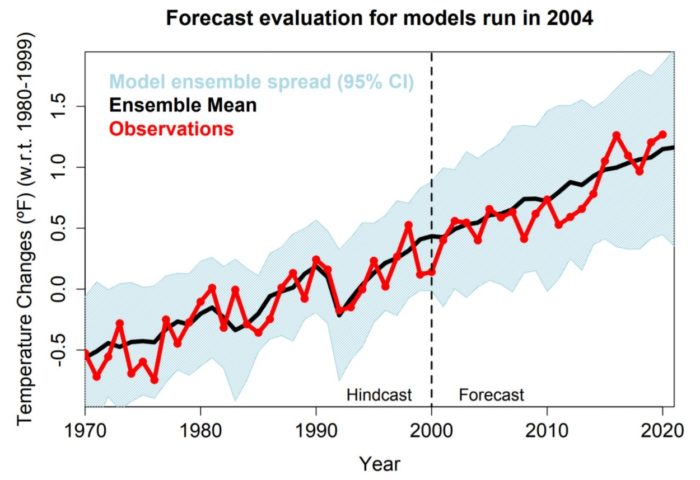Oct 05 2021
2021 Nobel Prize in Physics
 Syukuro Manabe, Klaus Hasselmann, and Giorgio Parisi share this year’s Nobel Prize in Physics for their work increasing our understanding of how complex systems work. This is a powerful tool for understanding the world, which reminds me of previous advances in our understanding of how gases behave.
Syukuro Manabe, Klaus Hasselmann, and Giorgio Parisi share this year’s Nobel Prize in Physics for their work increasing our understanding of how complex systems work. This is a powerful tool for understanding the world, which reminds me of previous advances in our understanding of how gases behave.
Gases are a phase of matter in which high energy particles are bouncing around at random. It would be impossible to predict the pathway of any individual gas molecule. However, collectively all of this random complexity follows very predictable laws. Similarly, weather is a very complex system. We can predict weather that is about to happen, but beyond a few days it becomes increasingly difficult. The system is simply too chaotic. However, climate (long term weather trends) follows theoretically predictable patterns. The trick is to see the hidden patterns in the chaos, and that is the work that these three physicists did.
Manabe and Hasselmann share half the prize for their work on climate models:
Syukuro Manabe demonstrated how increased levels of carbon dioxide in the atmosphere lead to increased temperatures at the surface of the Earth. In the 1960s, he led the development of physical models of the Earth’s climate and was the first person to explore the interaction between radiation balance and the vertical transport of air masses. His work laid the foundation for the development of current climate models.
About ten years later, Klaus Hasselmann created a model that links together weather and climate, thus answering the question of why climate models can be reliable despite weather being changeable and chaotic. He also developed methods for identifying specific signals, fingerprints, that both natural phenomena and human activities imprint in the climate. His methods have been used to prove that the increased temperature in the atmosphere is due to human emissions of carbon dioxide.
Together they laid the foundation for modern climate models, which have resulted in very accurate predictions of recent warming. Despite the false narrative from climate change deniers that our climate models are wrong, they have been extremely accurate. Even the older projections from 50 years ago worked quite well. They were off mostly because the data input into the models was not accurate, but if you use older models with better data they actually predicted the last 50 years of warming quite well.
Parisi’s work did not deal specifically with climate, but with finding hidden patterns in complex materials.
His discoveries are among the most important contributions to the theory of complex systems. They make it possible to understand and describe many different and apparently entirely random materials and phenomena, not only in physics but also in other, very different areas, such as mathematics, biology, neuroscience and machine learning.
This is a good example of why math is so important to physics and science in general. It is a basic and necessary tool. Increasingly, this tool also needs to be combined with computer technology, data analysis, and statistics. Modern astronomers, for example, are mostly not spending their time with an eye looking through a telescope. They are analyzing digital information using computer algorithms. Mathematical models and managing vast amounts of data are now central to many sciences, perhaps especially physics, and this year’s Nobel prize reflects that reality.
Increasingly modeling large amounts of data is also being combined with artificial intelligence (AI). AI tools are good at sifting through massive data sets, and finding hidden patterns in the apparent chaos. This represents a couple of long term trends in our science and technology. Increasingly our technology is based on connecting our analog world with the digital world. The advent of 3D printers is one example of this – if you have a digital model of a physical object, then you can create that physical object in the real world. The second long term trend is that increasingly advanced computer algorithms and AI systems are managing our digital world.
We will see to what extent these trends translate to the Nobel prizes. The prizes tend to run years or even decades behind the scientific advances, as with the Physics prize this year, so there may be a huge delay before we see this happen. But it appears likely that increasingly scientific advancement will be based on better ways to understand and manage information. Some AI enthusiasts predict that the end-stage of these trends is for a powerful AI to be essentially the last technological breakthrough that humans need create. Once that is done then AIs will take over, accelerating science and technological advance far greater than mere humans can achieve. Still others predict that we will merge with that AI and so the distinction will increasingly blur.
One final thought is that I like this year’s Physics prize because it is all about making sense out of apparent chaos. In a way, that is a metaphor for all of science, and so modeling reality (whether it’s climate or something else) is perhaps one of the purest forms of science.






